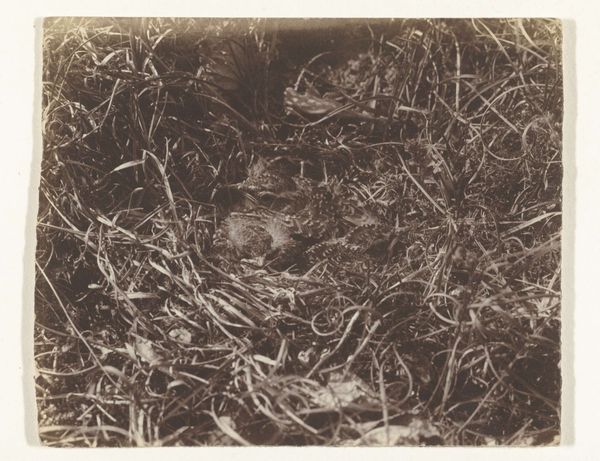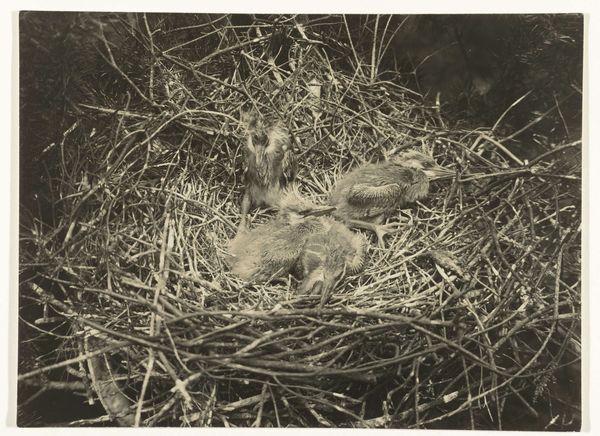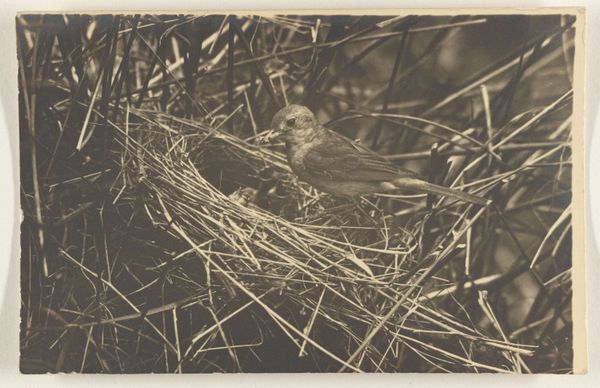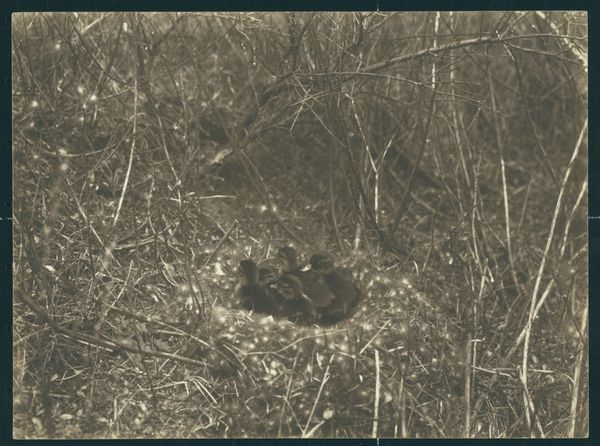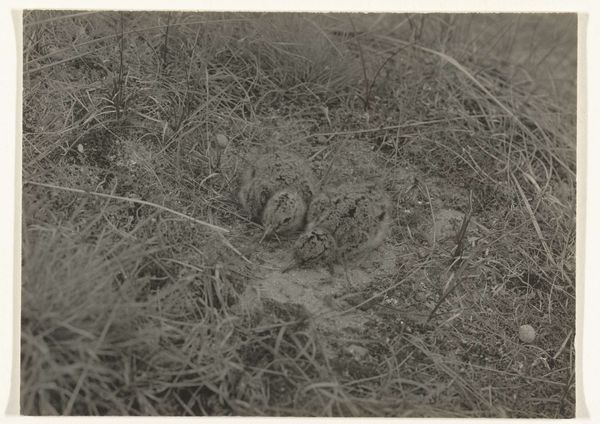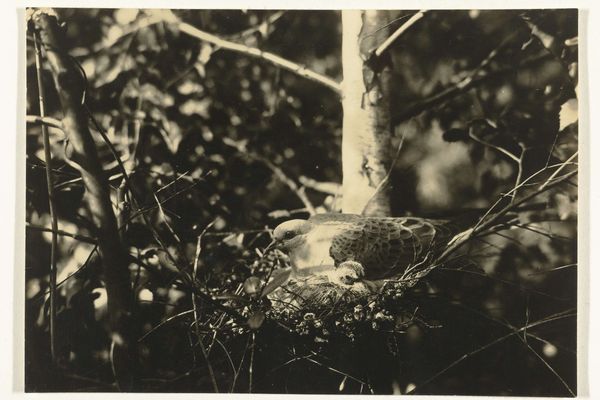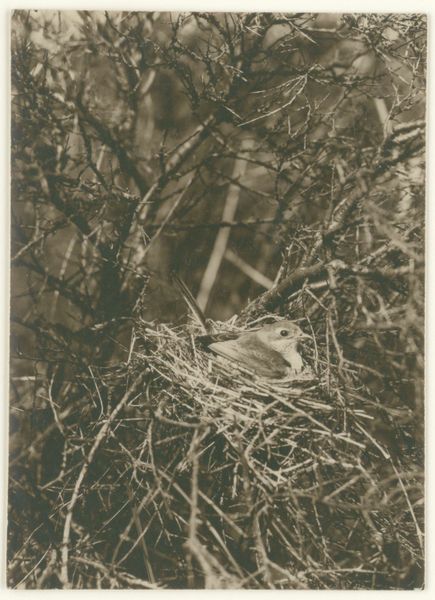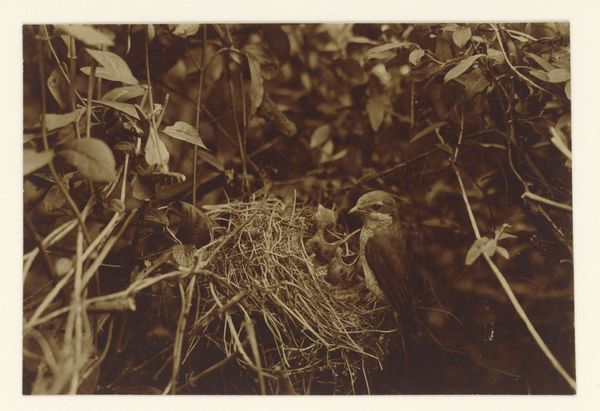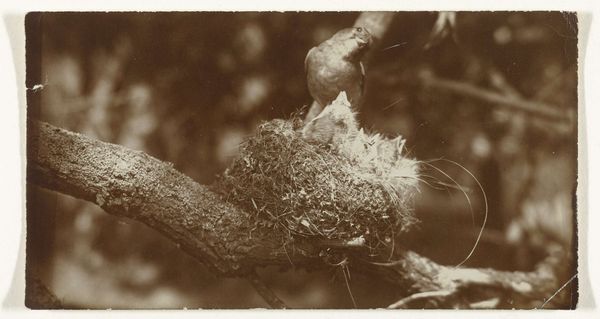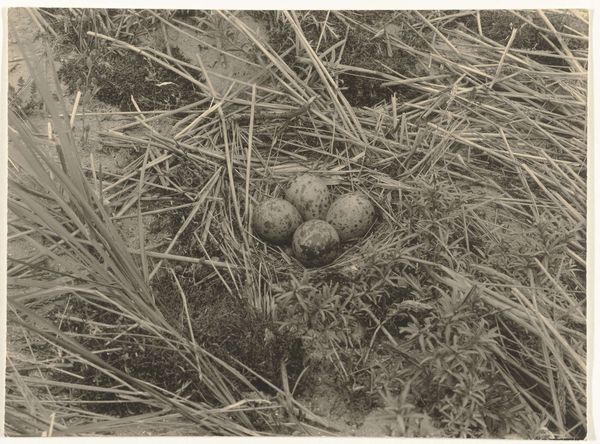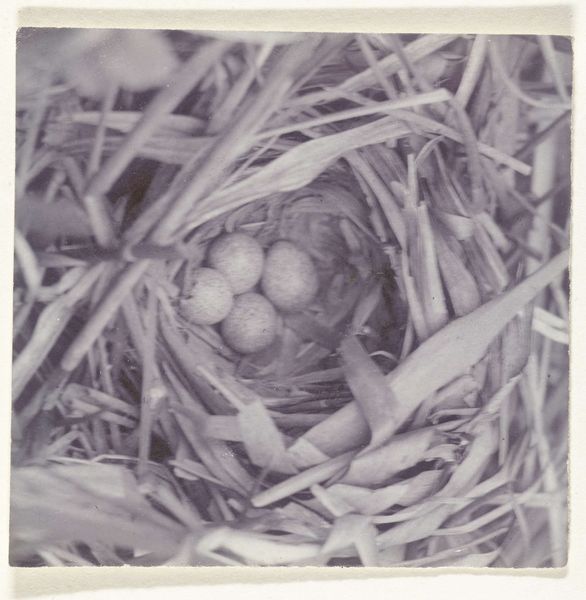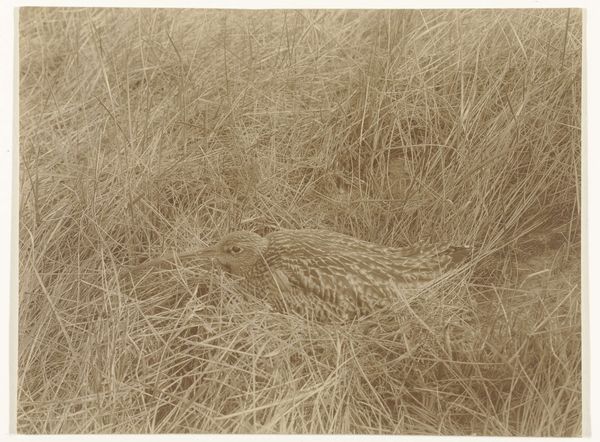
photography
#
still-life-photography
#
landscape
#
photography
#
realism
Dimensions: height 90 mm, width 137 mm
Copyright: Rijks Museum: Open Domain
Editor: This photograph, “Paapje broedend op haar nest” by Richard Tepe, sometime between 1900 and 1930, captures a bird nesting amongst tall grasses. The monochrome image creates a sense of intimacy and quiet observation, almost like we're intruding on a private moment in nature. What stands out to you most about this work? Curator: This piece speaks volumes about our relationship with the natural world, doesn't it? Tepe, through his lens, seems to invite us to consider ideas of vulnerability and resilience. Thinking intersectionally, how does this quiet, domestic scene clash, or perhaps resonate, with the industrial expansion of the early 20th century? The nest itself is such a potent symbol, a fragile construction in a world undergoing rapid change. Editor: That's a great point! I hadn't considered the backdrop of industrialization. Does the Realist style contribute to a particular reading of the subject matter? Curator: Absolutely. Realism, particularly during this period, often aimed to depict life as it truly was, without idealization. Tepe’s choice potentially highlights a concern for the preservation of these natural habitats amidst growing urbanization. Consider the gendered connotations as well – the nurturing mother bird, the vulnerability of domestic space. Are these stereotypes reinforced, or challenged by placing them in the wild? Editor: Interesting... It's a complex relationship. On one hand, the photo does feel traditional in its subject. On the other, simply drawing attention to this quiet act feels inherently radical, a statement in favor of preservation and a slower pace. Curator: Precisely. By immortalizing this tender scene, Tepe engages in a subtle form of environmental activism. What does this seemingly simple photograph teach us about our place within broader ecosystems? Editor: I hadn't thought of it that way before, but it really highlights how art, even in its quietest forms, can advocate for crucial dialogues about nature, preservation, and the societal changes happening all around us. Thank you! Curator: And thank you. It is by viewing art through this lens that we may cultivate not just appreciation but an enhanced awareness of self and nature.
Comments
No comments
Be the first to comment and join the conversation on the ultimate creative platform.
